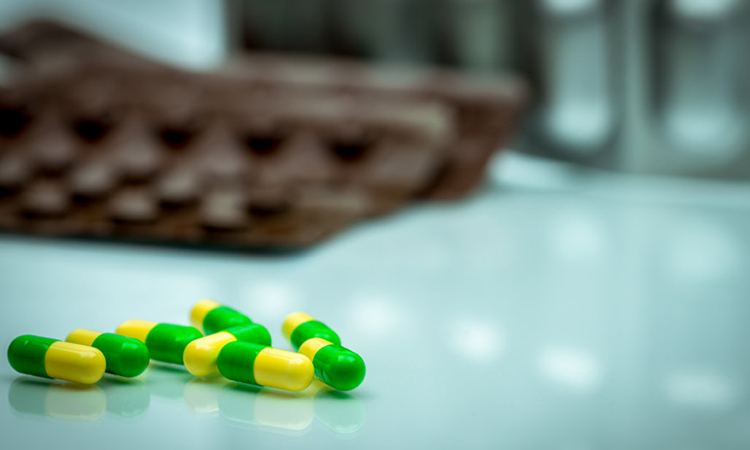
List of Stimulants – Stimulants are among the most regularly abused drugs in the U.S. Stimulants are a class of drugs that include illicit substances such as methamphetamine and cocaine and prescription medications such as those that treat ADHD.
These drugs work by releasing certain chemicals in the brain such as dopamine and norepinephrine, which correspond to feelings of attentiveness, alertness, happiness, and fulfillment. Stimulants work by triggering the overproduction of these chemicals and saturate the neurons in our brain, provoking the experience of those feelings beyond normal levels.
Immediate side effects related to stimulant abuse include the following:
- Decreased appetite
- Dilated pupils
- Nausea
- Tachycardia (above normal heart rate)
- Hypertension (high blood pressure)
- Fever
The most potent stimulants, such as cocaine and methamphetamine, can induce feelings of franticness and result in bizarre, unpredictable and violent behaviors, hallucinations, and psychotic episodes.
Cocaine
Cocaine is a stimulant synthesized from the naturally occurring coca plant. Cocaine is referred to by many names, such as coke, crack, candy, snow, rock, blow, flake, base, powder, and yeyo.
Although snorting is the most common method of ingesting powder cocaine (hydrochloride salt), freebasing offers perhaps the most rapid, immediate, and dangerous high.
Cocaine in its freebase rock form is known as crack. In addition to these two methods, cocaine powder can be mixed into a solution with water then injected into the bloodstream or rubbed onto the gums where it is absorbed through the mucous membranes.
The stimulant effects caused by cocaine use are very intense, so abuse usually consists of maintaining this “high” feeling through repeated ingestion, thus increasing the potential for long-term addiction and risk of overdose. The euphoric high of cocaine can be followed by harmful side effects such as the following:
- Irritability
- Nervousness
- Paranoia
- Anxiety
- False sense of alertness
- Hypersensitivity to light and sound
Amphetamines
Amphetamines are stimulants prescribed for the treatment of Attention-Deficit Hyperactivity Disorder (ADHD) and narcolepsy. They work to increase our attention and the ability to maintain a focus on tasks, as well as heighten general alertness and suppress appetite.
Commonly abused prescription amphetamines include Adderall, Concerta, Ritalin and Vivance.
The highly sought-after stimulant effects of amphetamines significantly increase the risk for abuse, particularly for college students, clubgoers, and those who work long hours, such as truck drivers.
Behaviors associated with amphetamine abuse include taking doses higher and/or more often than prescribed without consulting a doctor, along with altering the method of administration, such as snorting or injecting.
Amphetamine use can increase one’s heart rate and blood pressure, and cause fever, loss of appetite, and poor sleeping patterns. Severe consequences of amphetamine abuse include the following:
- Insomnia
- Malnutrition
- Depression
- Short-term memory loss
- Inability to concentrate
- Repetitive behaviors
- Anxiety
- Confusion
- Paranoia
- Delusions
- Amphetamine-induced psychosis
- Seizures
Ecstasy
Ecstasy is a synthetic designer drug that produces both stimulant and hallucinogenic effects, altering perception and mood. Some common street names for Ecstasy are MDMA, Molly, or X. For the most part, Ecstasy is bought and sold in pill form on the street, though it can be crushed and snorted or ingested as a liquid mixture.
The effects of Ecstasy are often marked by a profound increase in feelings of trust, closeness or intimacy with other people, including strangers. Because of this, risky sexual behavior, which can lead to the contraction of sexually transmitted diseases, is perhaps the most significant negative consequence of Ecstasy abuse.
Likewise, high doses of Ecstasy can cause dangerous fevers, leading to the damage or failure of the kidneys, liver or heart.
Methamphetamine
Methamphetamine, also known as meth, is a very addictive and potent stimulant. Upon consumption, meth produces an immediate and intense whirlwind of pleasure, energy, and confidence. In the brain, meth stimulates chemicals associated with reward and well-being.
Much like cocaine, these feelings of reward and euphoria can lead one to harmful, repetitive use to maintain the “high.” The positive feelings caused by meth use are followed by negative feelings of anger, dread, manic excitement, and general malaise. These feelings can cause the person to repeat drug use to both maintain the positive feelings of the high and avoid the adverse effects of withdrawal.
This vicious cycle makes meth addiction extremely difficult to avoid, sometimes even after a single use.
Intensity and volatility characterize behaviors of someone high on meth. A meth high often leads the abuser to suffer delusions regarding their power over oneself and others. This overconfidence in one’s abilities promotes a false sense of importance and superiority over other people (delusions of grandeur.)
Meth, like Ecstasy, can dramatically increase body temperature to the point of a loss of consciousness. Moreover, a meth user can experience severe itching sensations known as “tweaking,” a sensation that feels like insects crawling all over their body. They may also experience significantly disordered thinking and emotional instability.
Long-term use or addiction can lead to psychotic breaks from reality, memory loss, heart problems, seizures and serious dental complications, known as “meth mouth.”
Additionally, because one’s brain becomes so saturated with these reward chemicals, along with dependence and addiciton, prolonged abuse can cause significant brain damage, making the delusions, anger and dread permanent.
Treatment for Stimulant Addiction
Treatment for stimulant addiction begins with a medication-assisted detox at our center followed by a residential stay of 30 days or longer. Patients are also encouraged to engage in intensive outpatient treatment (IOP) as he or she makes the transition back into society.
Both formats offer patients individual and group therapy, counseling, 12-step programs, and alternative practices such as yoga and art therapy.
Related: Difference Between Crack and Cocaine